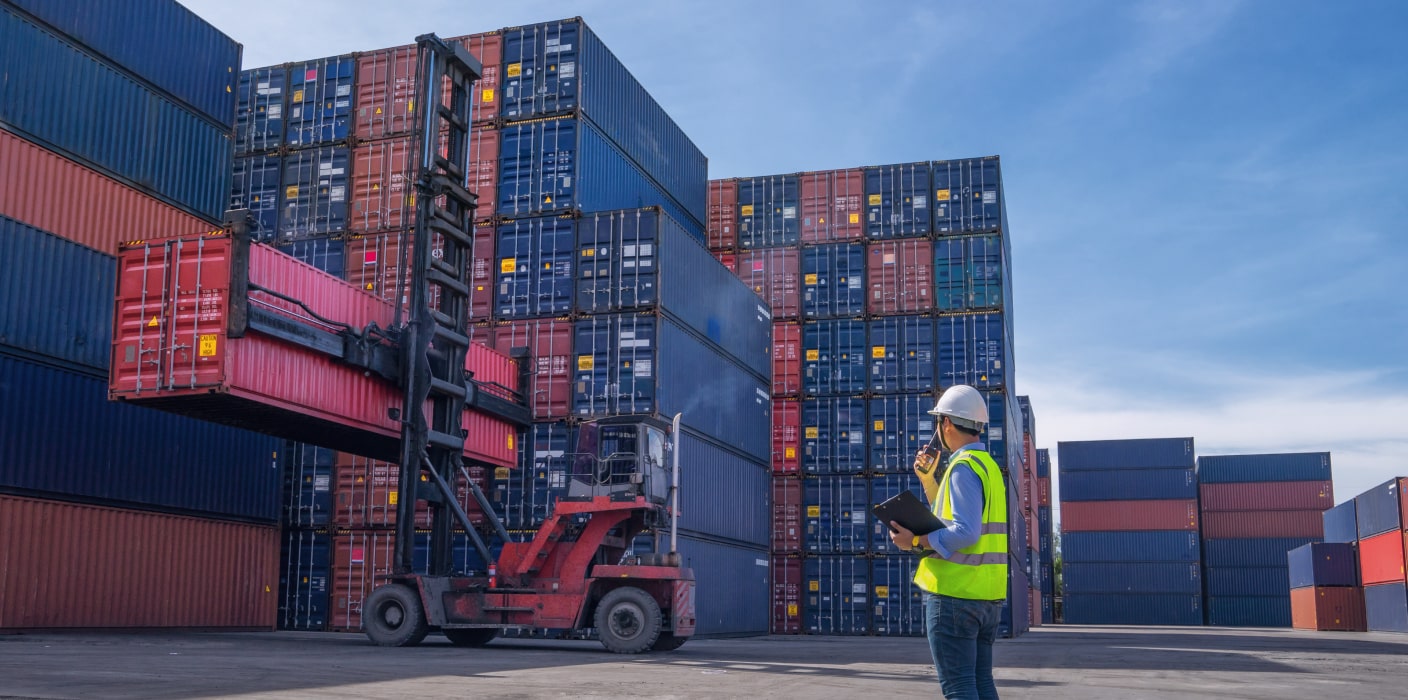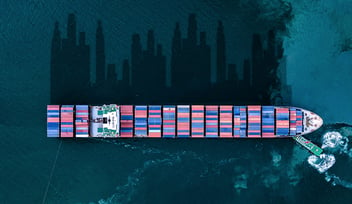A little over a year ago, it cost on average $1,650 to transport a 40-foot sea container on the trade route connecting China (Shanghai, the world’s largest seaport) to Europe (Rotterdam, Europe’s largest seaport). Today, transporting the exact same goods costs about $13,800, according to the Drewry reference site, a sevenfold increase in a year!
Initially, the rise in transport costs mainly penalised goods with low added value, for which margins are small (we’re talking about goods like refrigerators). Now, because of the huge increase in maritime transport costs, it is even becoming prohibitive to transport goods with high added value. Container prices have also spiked. From $3,000 in the summer of 2020, they are now reaching $20,000. It appears logistics in the post-covid-19 era are in troubled waters.
What is behind this drastic surge in ocean freight shipping costs?
This is what is called the bullwhip effect. This term refers to the increasing repercussions of a strong variation in demand along the supply chain. During the pandemic, companies reduced their orders while suppliers did the same to an even greater extent as they anticipated that future orders would also be reduced.
When the economy began to reopen in spring 2020 in Europe and the US, there was not enough production capacity to meet the significant increase in demand. In parallel, there was unprecedented congestion in ports and acute transport problems (the temporary blockage of the Suez Canal at the end of March 2021 and the fact that many containers were not located where they were needed to transport merchandise). As a result, the ocean freight sector is facing profound and lasting challenges.
Are the disruptions also related to Brexit?
There were small-scale disruptions in supply chains since Brexit became official in January, but they only concerned certain very specific goods (this was the case with automotive spare parts in the lighting system for example). While it used to take just a few days to receive goods from the UK before Brexit, it can now take up to three weeks due to new customs and regulatory constraints. However, these hiccoughs still only concern very specific goods and their impact on the global supply chain is minimal compared to the bullwhip effect.
How long will the disruption last?
All experts agree that tensions in global supply chains are far from over. Recovering from supply chain disruptions will not happen overnight. Not only is the bullwhip effect still present, but we cannot rule out the pandemic causing additional disruption in the future (in June 2021, China decided to temporarily close the third largest container terminal in the world in Shenzhen due to Covid cases. This resulted in weeks of delay in deliveries and an additional increase in delivery costs to Europe and the US).
While it is hoped that widespread vaccination will eventually contain the pandemic, it is very doubtful that international trade will return to normal before the end of 2021 or even the end of the first quarter of 2022. This means that the prohibitive cost of transporting goods by sea will continue to be a serious problem for companies for several more months. These exploding costs are also expected to feed inflationary pressures that are far from welcome in this period of recovery in economic activity.
Is China’s primary role in supply chains being called into question?
China is the undisputed winner of the Covid crisis. Its economy is strong, and its middle class continues to grow.
Figures speak for themselves: there are twice as many Apple iPhone users in China as there are in the US and General Motors sells more cars in China than in Canada, the US and Mexico combined. In 2022, the size of the Chinese economy will be 10% larger than 2019, while Germany and France will not return to their pre-crisis GDP levels before the beginning of 2022. In this respect, China will remain at the heart of supply and shipping logistics chains in the years to come.
However, the movement to relocate low value-added activities from China to South-East Asia (especially Vietnam) will intensify. This movement has been building up over the last few years, and could, in the long term, also concern high-tech activities. We know that Vietnam is looking for its economy to move upmarket in the communication and IT segment.
Does Covid call into question the globalisation of trade in goods?
Like other large-scale crises, the public health crisis has been an unprecedented stress test. But while the crisis calls for globalisation to be rebalanced, it does not call it into question. The pandemic has challenged our beliefs in globalisation and directly transformed the logistics industry: supply chains have been weakened and the specialisation of activities has become vulnerable. In the turmoil of the crisis, some countries have even given in to the siren calls of protectionism.
However, despite certain weaknesses, the balance sheet for globalisation is generally positive over the long term, especially for less developed countries that have been able to specialise and lift their populations out of poverty, enabling the emergence of a middle class. Relocating global supply chain activities, so often talked about, is by no means easy. There are several ways of relocating: some may be quick (change of supplier if the offer exists), others may be longer, more expensive and more difficult. But relocation doesn’t happen by waving a magic wand, it is built over time. It generates costs for companies... and for consumers who will have to bear them.
This is why long-term changes to global logistics at an industrial level will require a strong political act, a long-term strategic vision developed in cooperation with industrial groups. In particular, it would be advisable to study each sector carefully, to respond to companies’ concrete needs, to remove any regulatory blockages, to identify reception areas but, above all, to invest in sectors of the future by building on what already exist, in other words by identifying our know-how and developing it through technological disruption to position ourselves on the markets of the future with targeted investments to provide a comparative advantage.
Rather than relocating, we have to locate. It is essential to adopt a coordinated approach at a European level in order to create economies of scale. In parallel, and to no longer be captive to a single source of foreign supply, we must learn to diversify our imports and identify other countries that manufacture the products that our economy needs.
Rather than deglobalising, we must globalise in a different way.
Topics






